Related Research Articles

The following is a list of public holidays in Romania. According to Romanian law, Romania had 51 public holidays as of 2011, which cover 14% of the days of the year in the country.

Guizotia abyssinica is an erect, stout, branched annual herb, grown for its edible oil and seed. Its cultivation originated in the Eritrean and Ethiopian highlands, and has spread to other parts of Ethiopia. Common names include noog/nug ; niger, nyger, or nyjer seed ; ramtil or ramtilla; inga seed; and blackseed.
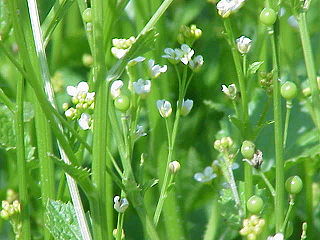
Crambe abyssinica is an annual oilseed crop of the family Brassicaceae. It is mainly cultivated due to the high levels of erucic acid that are contained in its seeds. The crambe oil is used for industrial purposes and its side products can be partly used as animal feed.

The Abyssinian genet, also known as the Ethiopian genet, is a genet species native to Ethiopia, Eritrea, Somalia, Sudan, and Djibouti. It is listed as Data Deficient on the IUCN Red List. It is one of the least-known genet species.
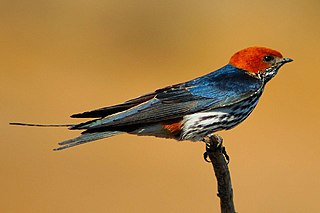
The lesser striped swallow is a large swallow. It breeds in Sub-Saharan Africa from Sierra Leone and southern Sudan south into eastern South Africa. It is partially migratory with South African birds wintering further north. West African birds leave the north of the breeding range in the dry season.

Guizotia is a genus of African herbs in the family Asteraceae. They are often known as sunflecks. The species Guizotia abyssinica is occasionally found outside of cultivation in Europe, North America and Asia.
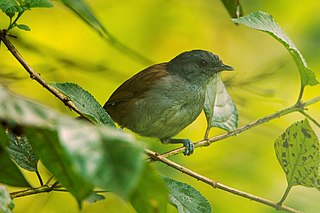
The African hill babbler is a species of bird in the family Sylviidae.

Xanthorhoe is a genus of moths of the family Geometridae described by Jacob Hübner in 1825.

Oxytenanthera is a genus of African bamboo. Bamboos are members of the grass family Poaceae.
Cautatha is a genus of moths of the family Noctuidae. The genus was erected by George Hampson in 1910.

Stoermeriana is a genus of moths in the family Lasiocampidae described by Josef J. de Freina and Thomas Joseph Witt in 1983.
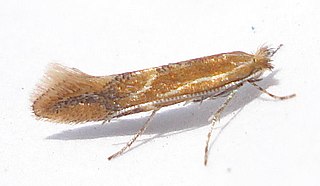
Phyllonorycter is a genus of moths in the family Gracillariidae.

Falcatula falcatus is a moth of the family Sphingidae. It is known from savanna and woodland from Zimbabwe to Malawi, Mozambique, Zambia, the Central African Republic and eastern Africa.

Harrisonia abyssinica is a species of shrub or small tree in the genus Harrisonia, family Rutaceae. Native to tropical Africa, its habitat is usually in transitional zones between deciduous woodlands and evergreen forest.
Disparctia vittata is a moth of the family Erebidae. It was described by Herbert Druce in 1898. It is found in Cameroon, the Democratic Republic of the Congo, Ghana, Kenya, Nigeria, Sierra Leone and Uganda.
Dorodoca anthophoba is a moth in the family Cosmopterigidae. It is found in the Democratic Republic of Congo.
Phiala abyssinica is a moth in the family Eupterotidae. It was described by Per Olof Christopher Aurivillius in 1904. It is found in Ethiopia.
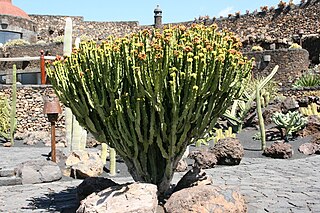
Euphorbia abyssinica, commonly known as the desert candle or candelabra spurge, is a species of plant in the family Euphorbiaceae. E. abyssinica is endemic to Ethiopia, Somalia, Sudan and Eritrea. It was first described in 1791, by the German botanist Johann Friedrich Gmelin. In its native habitat, it can grow up to 10 m (33 ft) tall. The woody stem is used for firewood and as timber in roofing, furniture and other items, and the sap is used in traditional medicine. It is also cultivated as an ornamental house plant.

Lippia abyssinica, or koseret, is a species of flowering plant in the verbena family, Verbenaceae. It is endemic to Ethiopia but cultivated throughout tropical African countries. The specific epithet abyssinica derives from Latin and means 'of or from Ethiopia (Abyssinia)'.
The Macroheterocera are a well supported clade of moths that are closely related to butterflies and macro-moths.
References
- ↑ De Prins, J. & De Prins, W. (2017). "Camellocossus abyssinica (Hampson, 1910)". Afromoths. Archived from the original on November 10, 2023. Retrieved December 4, 2017.